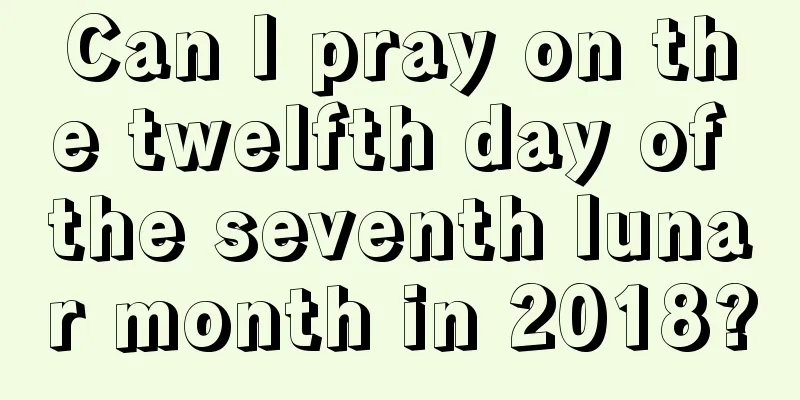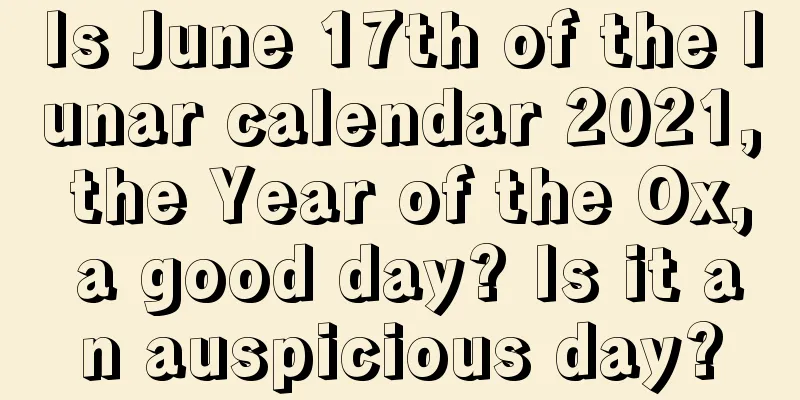What are the folk customs of the Mid-Autumn Festival on August 15th?

Mid-Autumn Festival is one of the four major traditional festivals in my country. On this day every year, people choose to get together with their families to admire the moon and eat moon cakes. What other customs are there during the Mid-Autumn Festival? The arrival of the eighth month of the lunar calendar also means that the summer heat has dissipated and autumn has truly arrived. So what should we pay attention to in the eighth month of the lunar calendar in 2018? Come to Mr. Shui Mo to learn more about related content.How much do you know about Mid-Autumn Festival?The Mid-Autumn Festival, also known as Moon Festival, Autumn Festival, Mid-Autumn Festival, August Festival, August Meeting, Moon-Chasing Festival, Moon-Playing Festival, Moon-Worshiping Festival, Daughters' Festival or Reunion Festival, is a traditional cultural festival popular among many ethnic groups in China and countries in the Chinese character cultural circle. It falls on the 15th day of the eighth month in the lunar calendar. It is named so because it falls exactly in the middle of the three autumns. In some places, the Mid-Autumn Festival is set on August 16. The Mid-Autumn Festival began in the early Tang Dynasty, became popular in the Song Dynasty, and by the Ming and Qing Dynasties, it had become one of China's major festivals along with the Spring Festival. Influenced by Chinese culture, Mid-Autumn Festival is also a traditional festival in some countries in East Asia and Southeast Asia, especially for local Chinese and overseas Chinese. On May 20, 2006, the State Council included it in the first batch of national intangible cultural heritage list. Since 2008, Mid-Autumn Festival has been listed as a national statutory holiday.What are the customs of Mid-Autumn Festival?1. Watching the tide <br /> In ancient times, in addition to watching the moon during the Mid-Autumn Festival, watching the tide was another Mid-Autumn Festival event in Zhejiang. The custom of watching the tide during the Mid-Autumn Festival has a long history. As early as the Han Dynasty, there was a very detailed description of it in Mei Cheng's "Seven Hairs". After the Han Dynasty, the custom of watching the tide during the Mid-Autumn Festival became more popular. There are also records of watching the tide in Zhu Tinghuan's "Supplement to Wulin Old Stories" in the Ming Dynasty and Wu Zimu's "Dreams of the Southern Song Dynasty" in the Song Dynasty.2. Guessing riddles <br /> On the night of the full moon in the Mid-Autumn Festival, many lanterns are hung in public places. People gather together to guess the riddles written on the lanterns. This is a favorite activity for most young men and women. At the same time, love stories are also spread during these activities. Therefore, guessing lantern riddles during the Mid-Autumn Festival has also evolved into a form of love between men and women. 3. Lighting Lanterns <br /> On the night of the Mid-Autumn Festival, candles are lit in lanterns tied to bamboo poles with ropes and erected high on the eaves or terraces. Small lanterns are also used to form Chinese characters or various shapes and hung high up in the house, commonly known as "tree Mid-Autumn Festival" or "vertical Mid-Autumn Festival". The lanterns hung by wealthy families could be several meters high, and the family members would gather under the lanterns to drink and have fun. Ordinary people would put up a flagpole and two lanterns, also to have fun. The city is full of lights, like a world of glass. "It seems that from ancient times to the present, the scale of the custom of lighting lanterns during the Mid-Autumn Festival seems to be second only to the Lantern Festival. 4. Burning Towers <br /> The game of burning tile lamps (also known as burning flower towers, burning tile towers, and burning foreign towers) is widely spread in the south. As recorded in Volume 5 of the Records of Customs of China: In Jiangxi, "On the night of the Mid-Autumn Festival, children usually pick up tiles in the wild and pile them into a round tower with many holes. At dusk, they put firewood in the tower under the bright moon and burn it. When the tiles are red hot, they pour kerosene on the fire, and in an instant, the whole field is red and bright as day. 5. Moon worship <br /> It is a very ancient custom in China. According to historical records, as early as the Zhou Dynasty, ancient emperors had the custom of worshiping the sun on the vernal equinox, the earth on the summer solstice, the moon on the autumnal equinox, and the sky on the winter solstice. The places for worship are called the Sun Altar, Earth Altar, Moon Altar and Heaven Altar. It is divided into four directions: east, south, west and north. The Moon Altar in Beijing is where the emperors of Ming and Qing dynasties offered sacrifices to the moon. The "Book of Rites" records: "The emperor worships the sun in the morning in spring and the moon in the evening in autumn. The morning is for the sun and the evening is for the moon." The evening of the moon here refers to the night when he worships the moon. This custom was not only followed by the court and upper nobility, but also gradually influenced the people as society developed. |
<<: Can renovation be started on September 16, 2018?
>>: What zodiac sign does a dog baby born on the Mid-Autumn Festival on August 15, 2018 belong to?
Recommend
What is the fate of a boy born on the fourth day of the eighth lunar month in 2022? How is fate?
What is the fate of a boy born on the fourth day o...
Is the fate of a girl born on February 16, 2019 in the lunar calendar good?
Is the fate of a girl born on February 16, 2019 in...
What are the taboos during the Great Cold solar term? Introduction to Feng Shui taboos after the Great Cold
Different things are suitable for doing during dif...
Where is the direction of the God of Happiness on November 20th of the lunar calendar 2017?
Winter months are cold, but when everything goes ...
What are the Feng Shui considerations for raising map fish, the best fish?
Introduction: Fish farming has been a hot topic i...
Can we start work on March 17th of the lunar calendar in 2022? How to determine the start time of renovation work?
The third month of the lunar calendar is also call...
Is there a 30th day in August of the lunar calendar in 2021? What month is the eighth month in the lunar calendar?
The lunar months can also be divided into long mon...
Can the burial be carried out on the second day of the fifth lunar month in 2018? Is the fortune of the day good or bad?
China is a particularly traditional country. Often...
Analysis of the influence of ancestral tomb feng shui on descendants
Introduction: For many people, the concept of anc...
What should we eat during the 2021 Ghost Festival? Food culture of the Ghost Festival on July 15
The Ghost Festival is a special day. People choose...
What day is the 13th day of the 12th month of the lunar calendar in 2017? What month and date is it?
The twelfth lunar month is also known as the mont...
Can I get a haircut on October 14th of the lunar calendar in 2017?
Everyone in life loves beauty, so in order to main...
Are pig babies born on May 1, 2019, Labor Day, lucky? What are their lucky numbers?
As we all know, May Day every year is the peak per...
Can I get a haircut on October 29th of the lunar calendar in 2017?
As the saying goes, "Everyone loves beauty&qu...
Is it possible to get married on the 12th day of the seventh lunar month in 2020?
Is it possible to get married on the 12th day of ...









